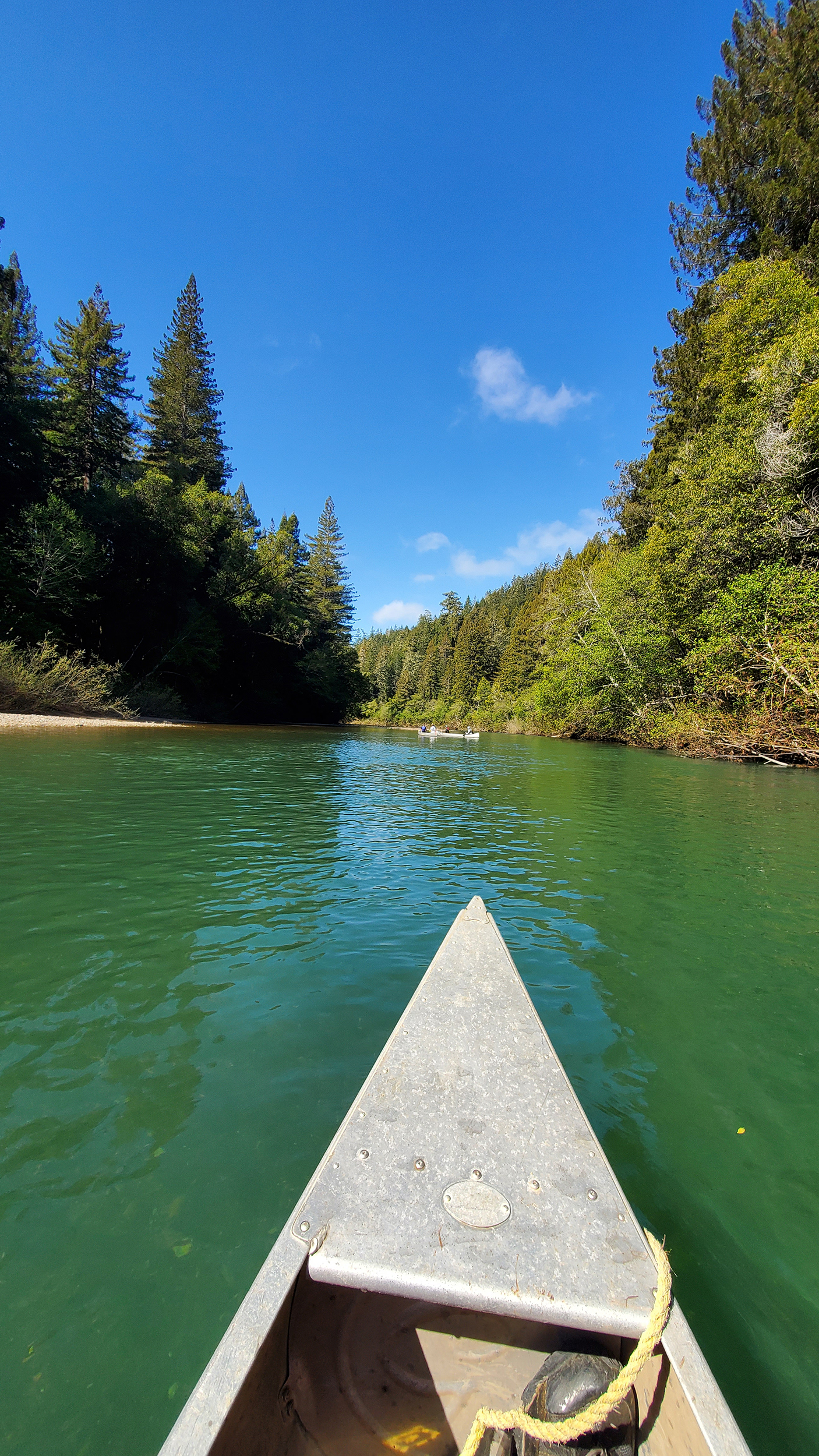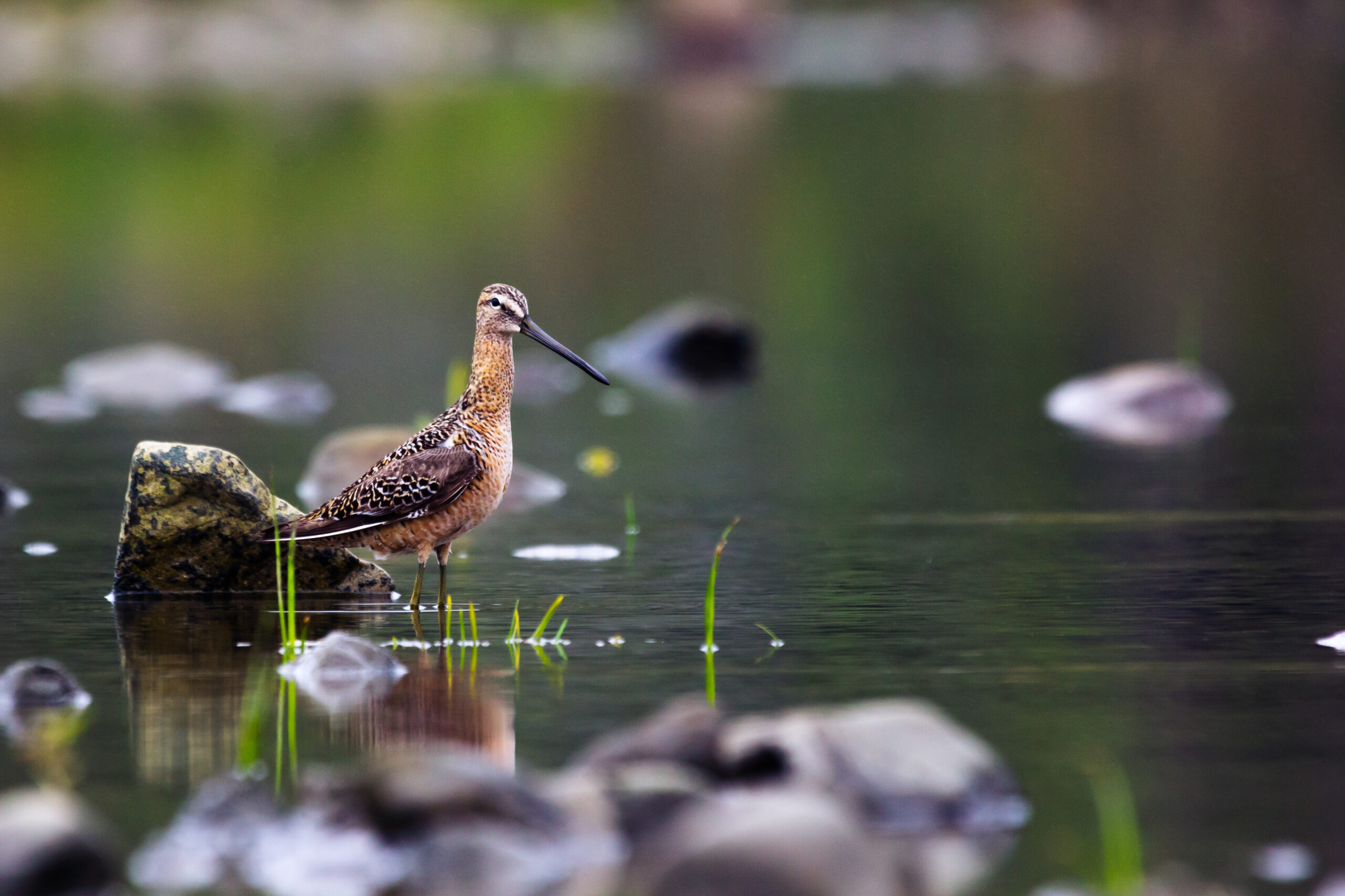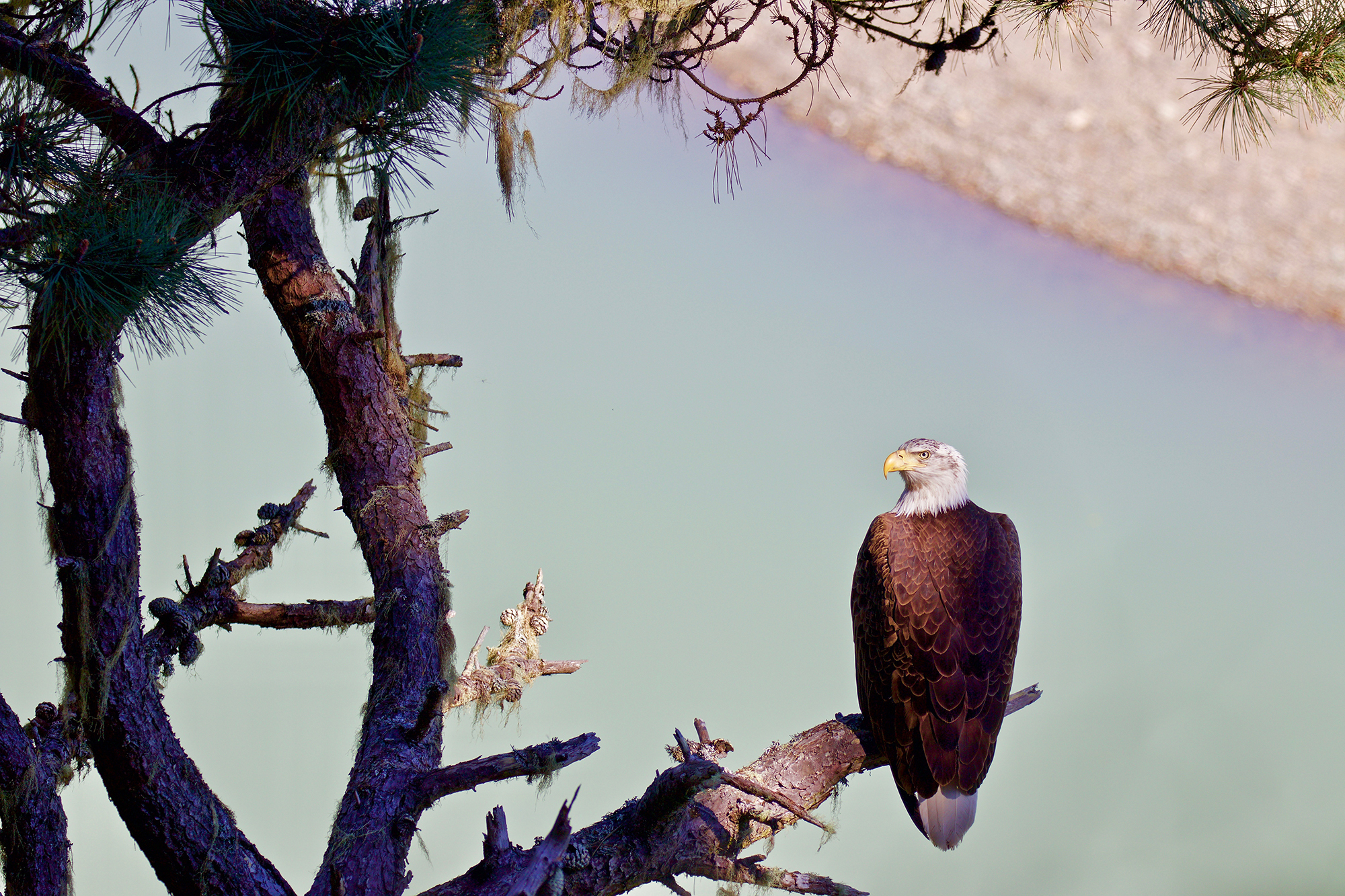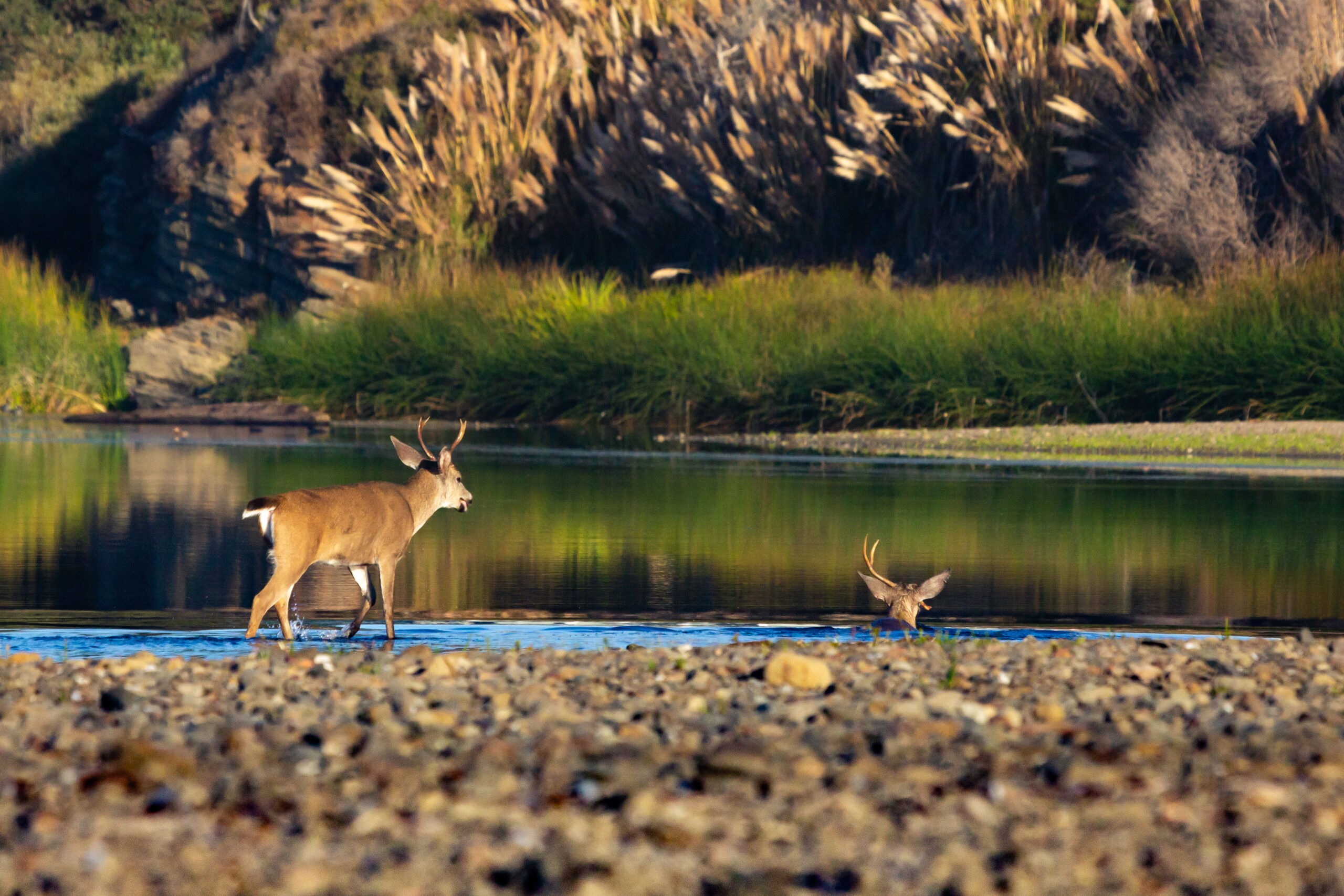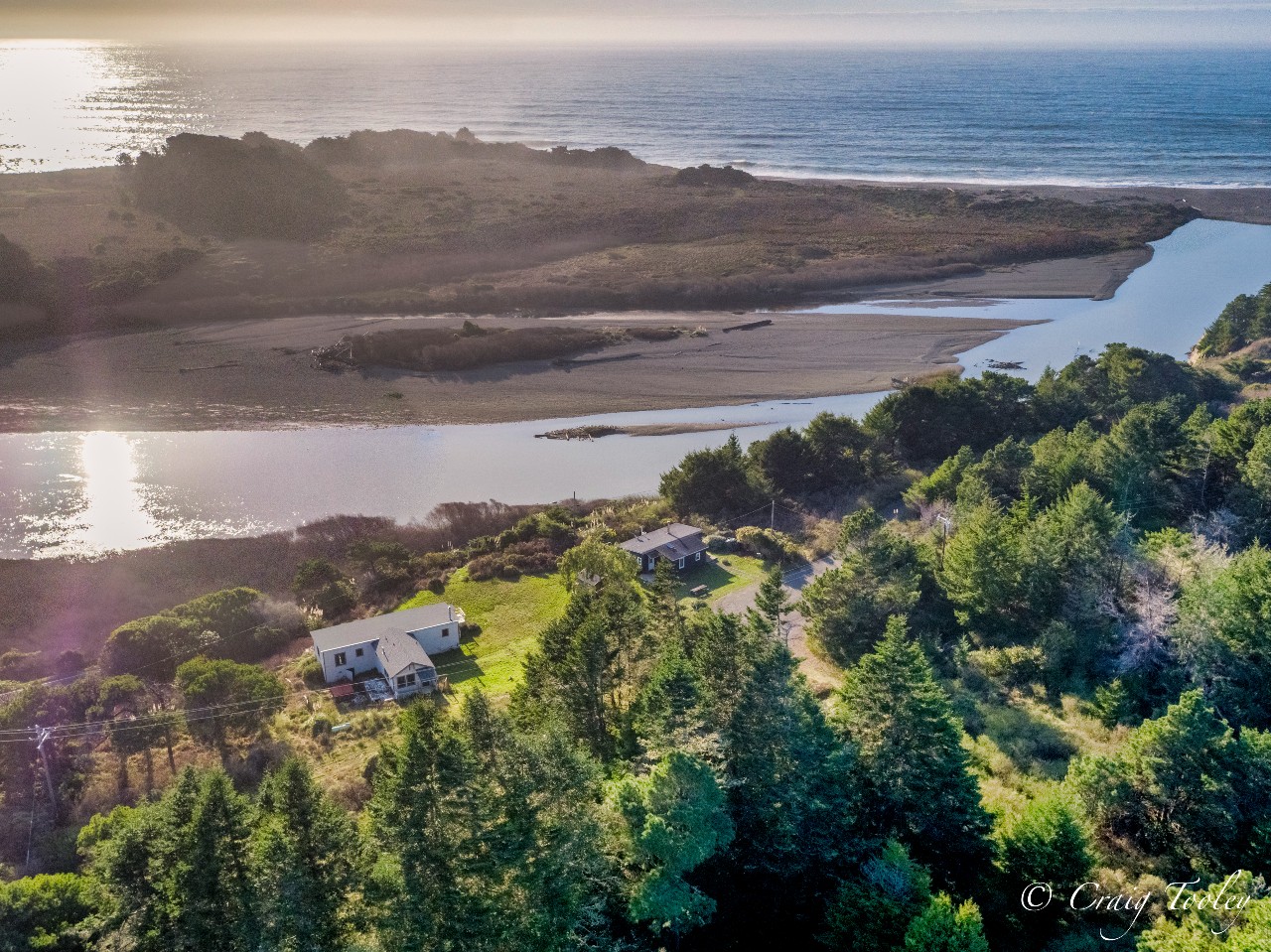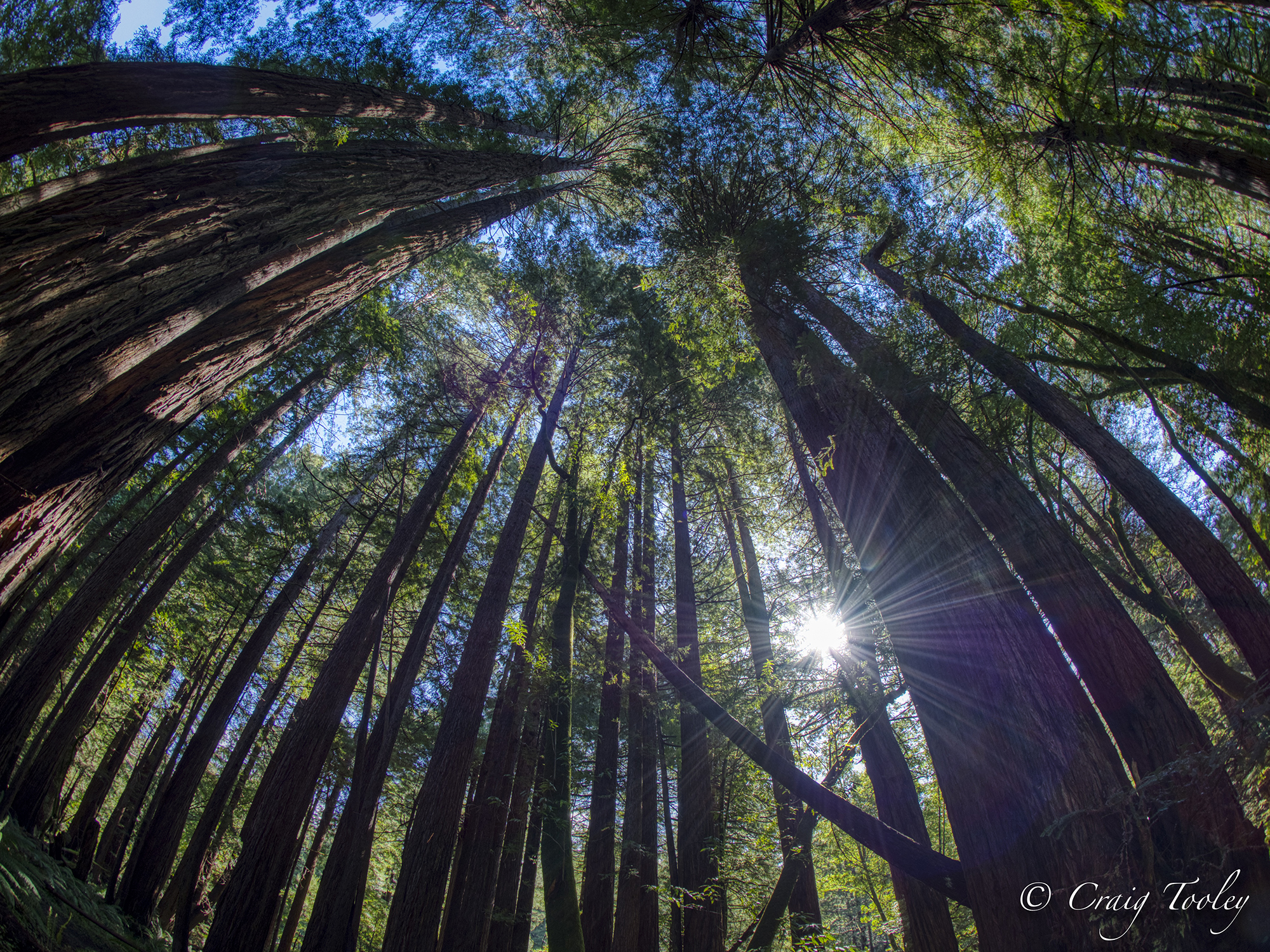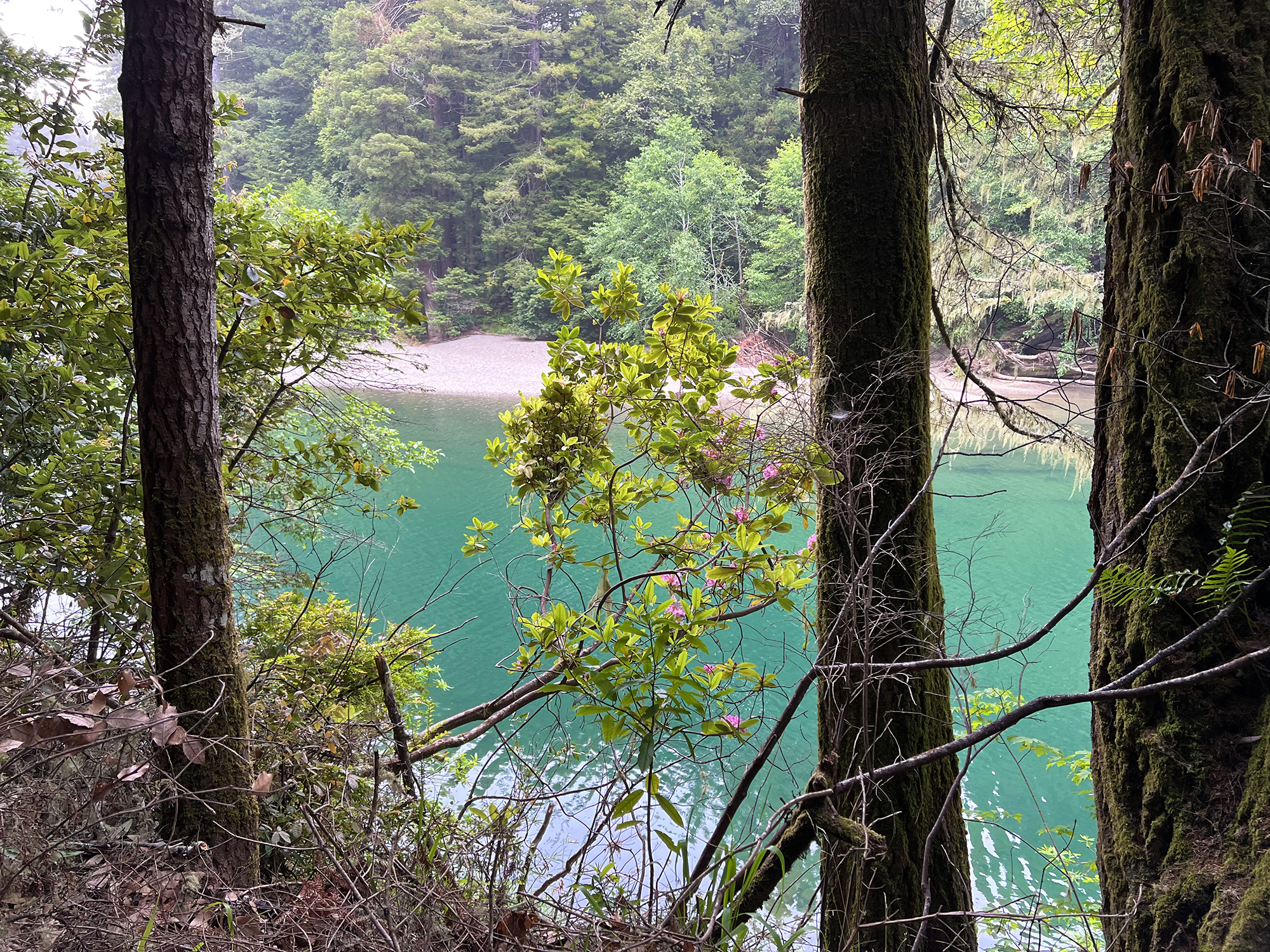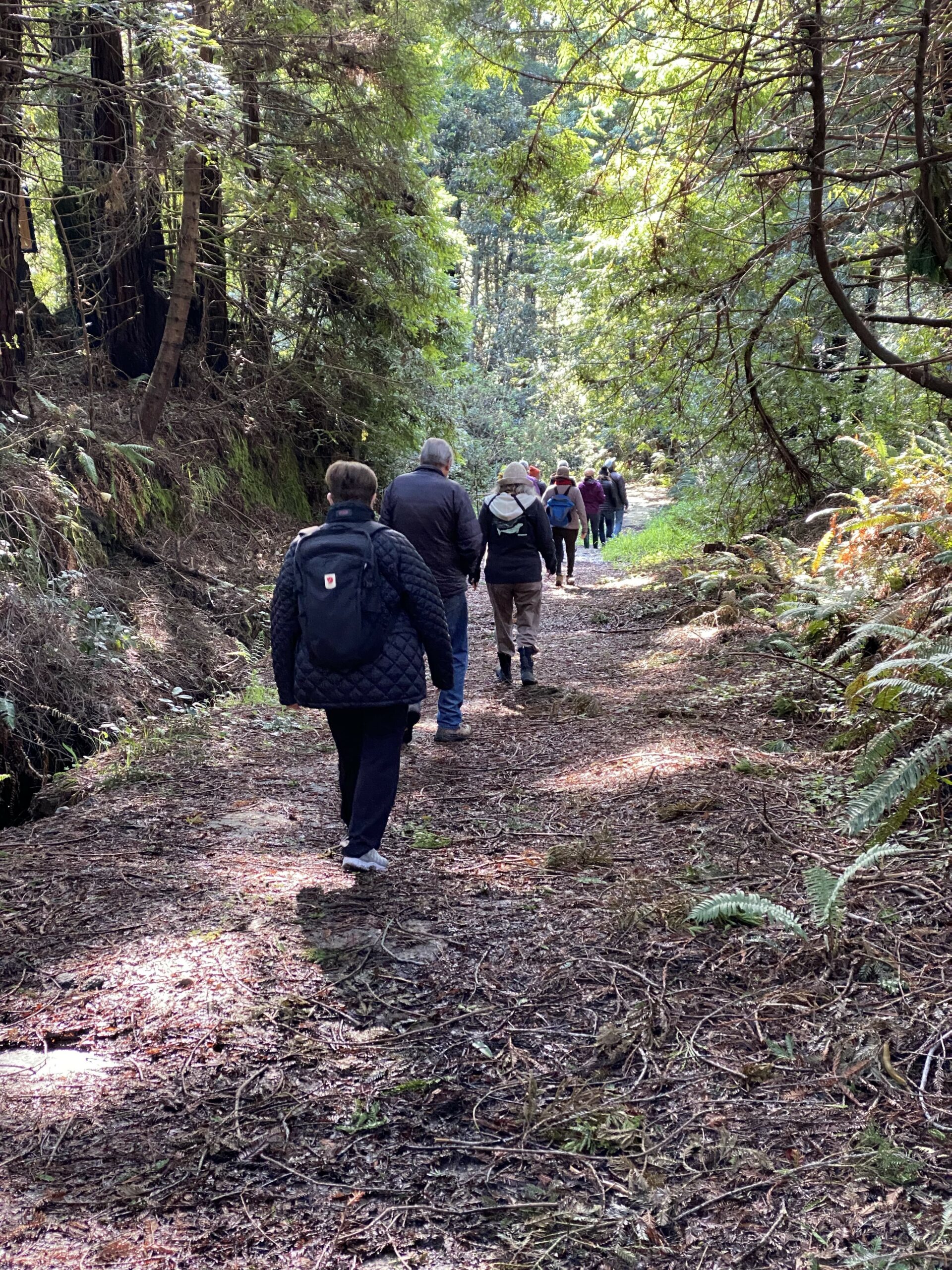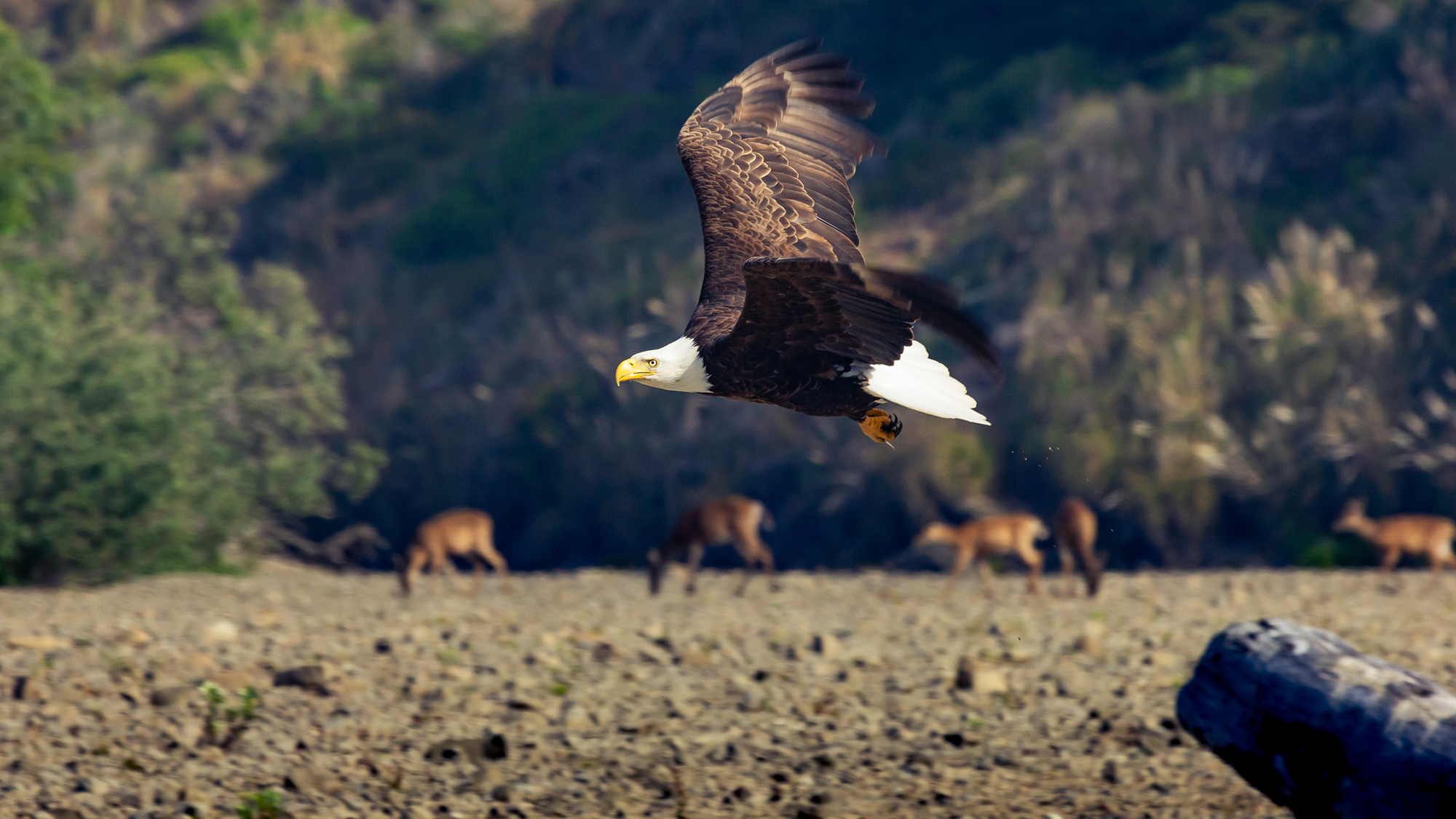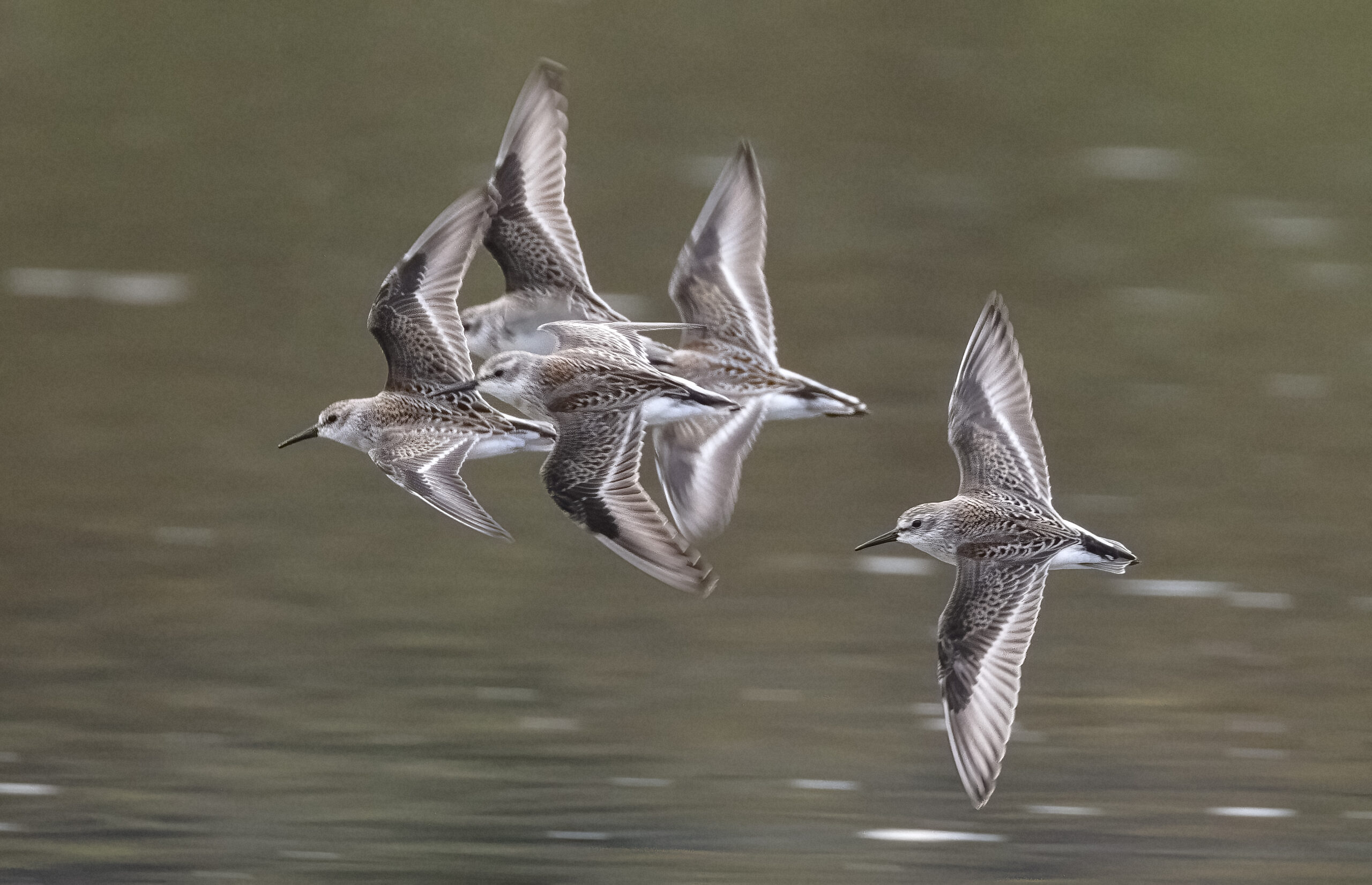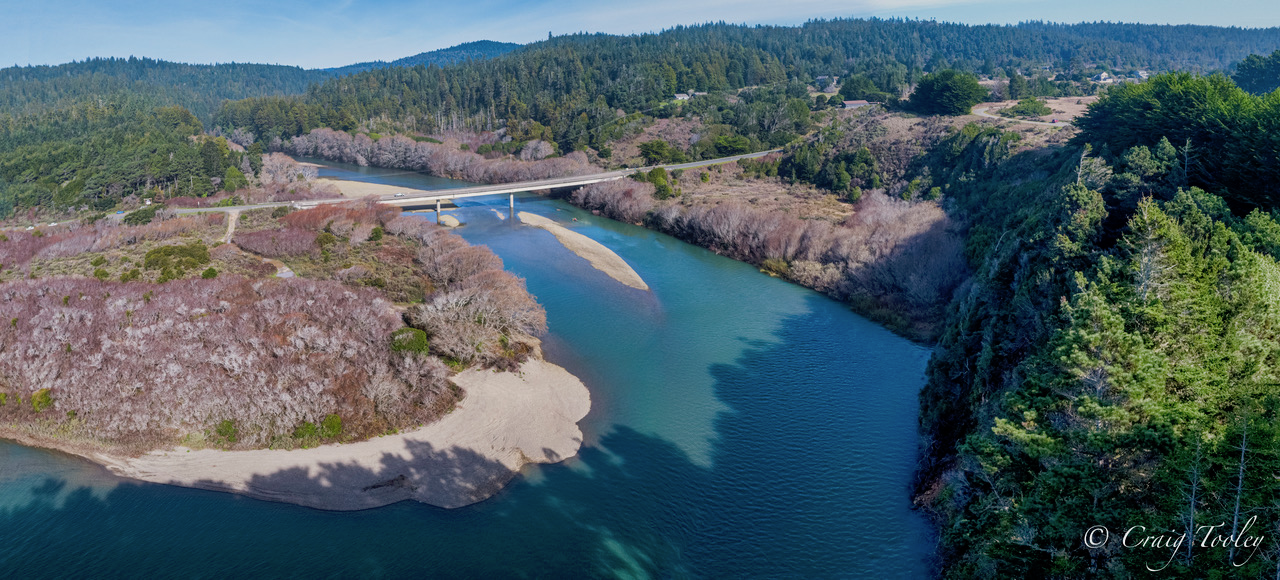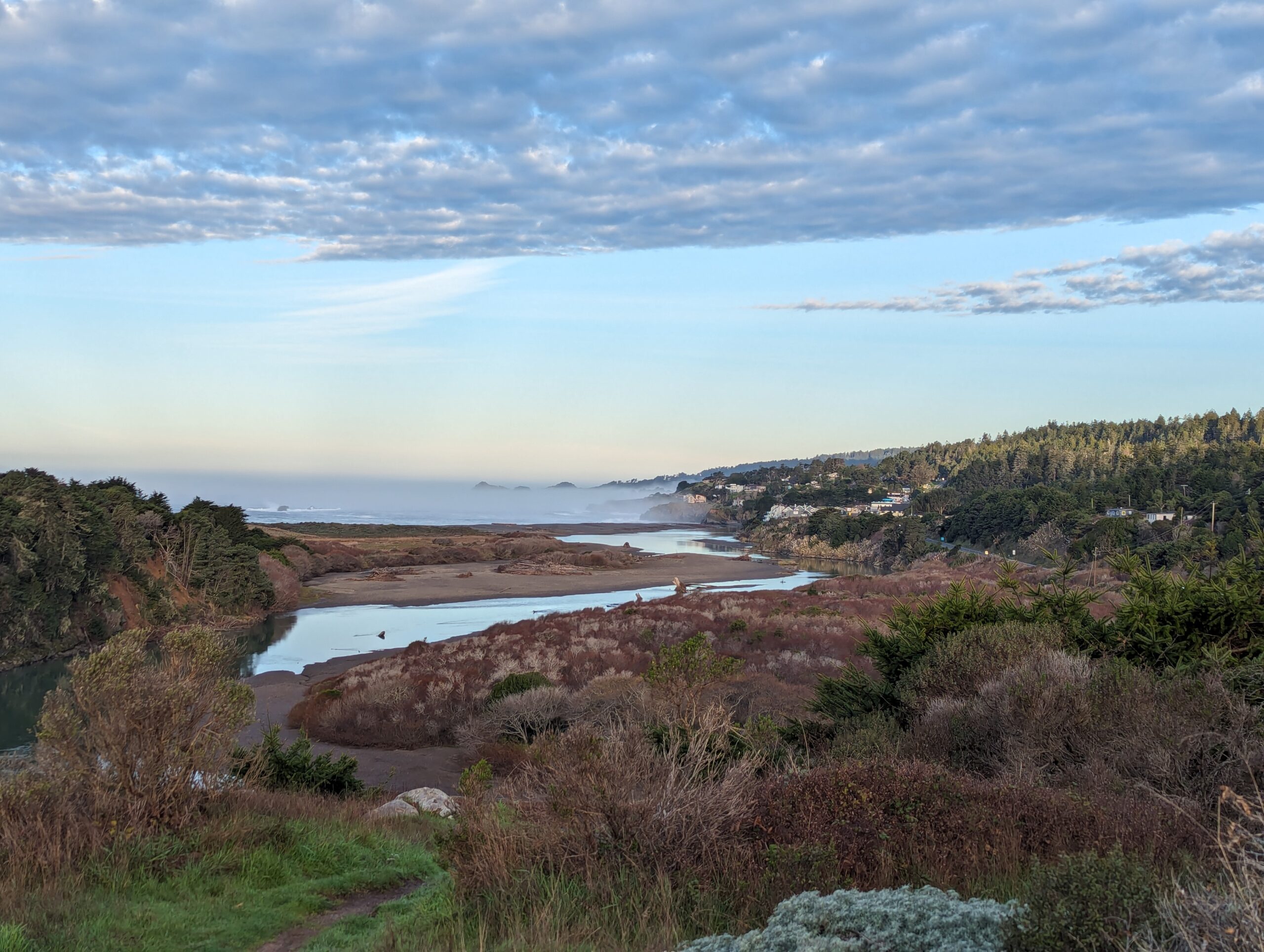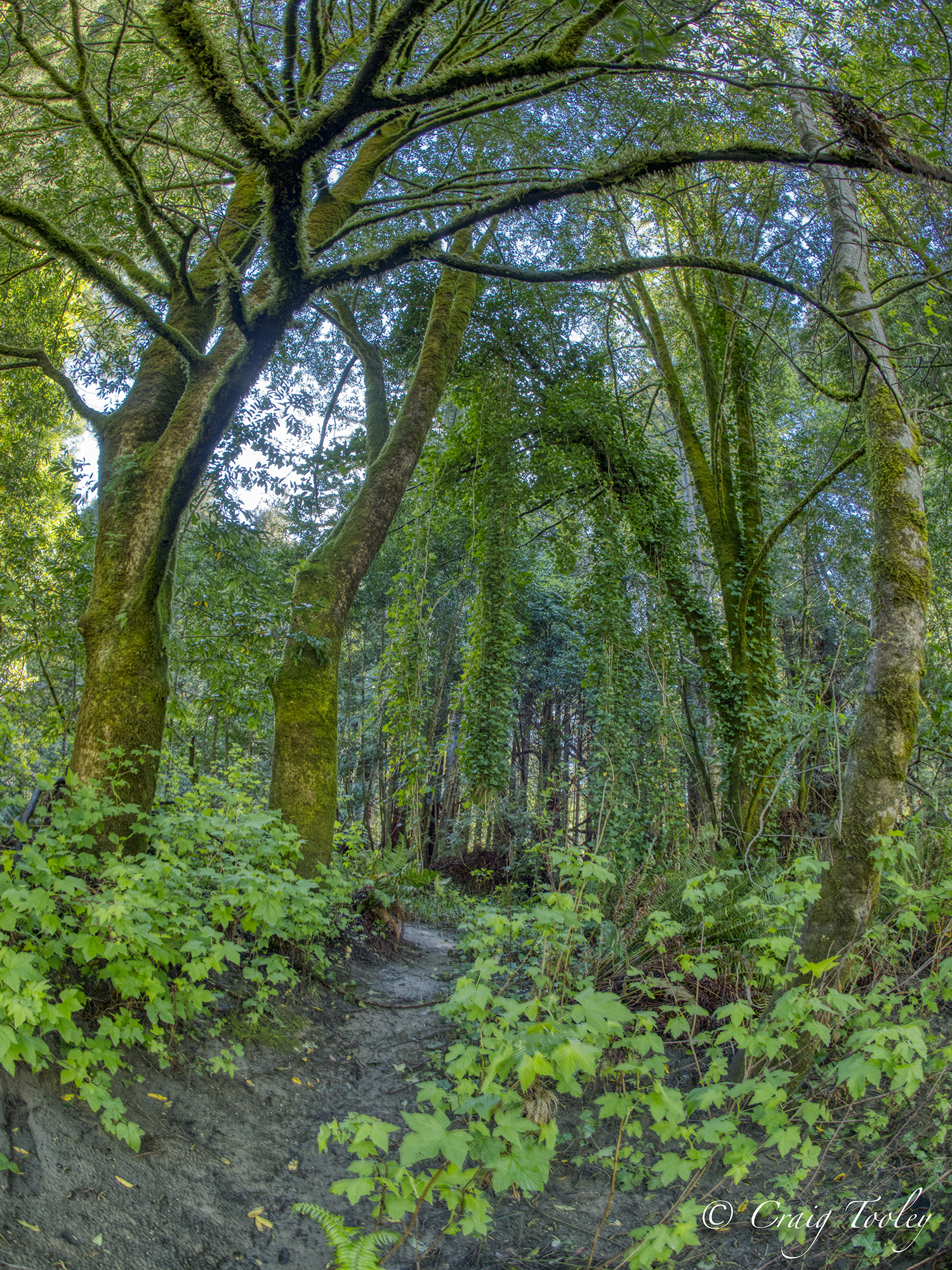Mill Bend Preserve Conservation Plan
Planning for Future Generations
Habitats of redwood, bishop pine, and alder forests, willow thickets, coastal scrub, emergent wetlands, and the Gualala River estuary are recovering from historic industrial and timber harvest disturbance. Even while burdened with extensive invasive plant populations and residual soil damage, existing habitats support diverse native plant and animal life, some of particular rarity. The Mill Bend Preserve Conservation Plan describes specific measures to restore habitat health, support native species, and adapt to climate change.
Public access improvements include approximately 2 miles of new trails, boardwalks through wetland and riparian areas, restrooms, and picnic areas. The existing California Coastal Trail can be extended from the Gualala Bluff Trail to the estuary via the upland Preserve to boost visitor experience and safety. More detailed designs have been prepared for improving recreational access to the estuary, including a durable access road and parking, a boardwalk into the willow forest, and off-channel backwater habitat. Interpretive signs are planned to inform visitors and support community engagement activities, such as guided walks.
“The work that lies ahead includes restoring highly degraded portions of the land and estuary; developing thoughtful public access that expands opportunities while protecting and enhancing sensitive areas; managing the everyday needs of plants, wildlife, and human visitors; and supporting the site’s resilience to changing environmental conditions”
–Jim Elias, RCLC Executive Director
Photo credits: Banner photo by Ethan Applegate. Gallery includes photos by Querido Galdo, Chris Braley, Craig Tooley, Andy Kiehl, Gail Jackson, David Bradbrook, Ronald Bolander, Nicolet Houtz

